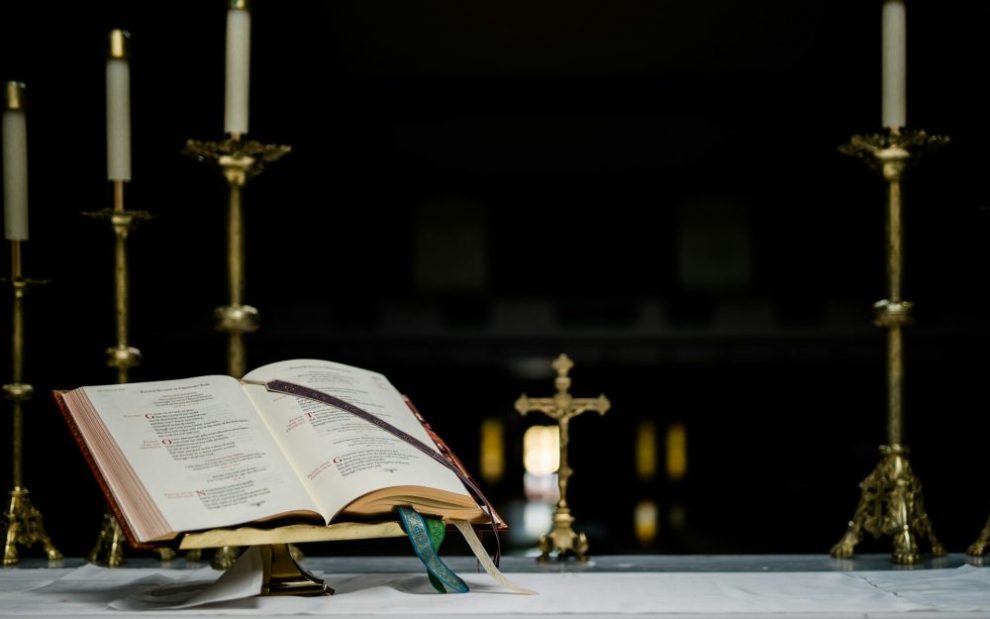There is much to ponder in the synod synthesis report, “A Synodal Church in Mission.” As I talked with my sister about the proposals, I expressed a desire to gather with women who were not in my close circle to hear their perspectives. She immediately thought of some of her friends and women in her parish, which is two hours away from where I live. Without our frequent conversations, she doubted she would have heard much about the synod and suspected the same would be true for them. They might be interested in learning more and engaging in a “conversation in the Spirit.”
Two weeks later, 12 women, ages 16 to 68, gathered in my sister’s living room to learn a bit about the current synod and how women’s participation and leadership continues to surface. After a brief introduction to the synod, we engaged in a “conversation in the Spirit” focused on their experience of church and their desires for the church. As the sharing unfolded, it was clear that the church is both home and a place in which they long to be more at home. Several women shared experiences of being treated as an afterthought, noting that over the years, their participation has been invited only when there aren’t enough men to fill roles. Others shared that they feel like women do the bulk of the work in the parish community. These two experiences are not mutually exclusive. There was joy, laughter, and pain palpable in the room and a deep desire for more.
The synthesis report reads, “There is a need to ensure that liturgical texts and church documents are more attentive to the use of language that takes into equal consideration both men and women, and also includes a range of words, images and narratives that draw more widely on women’s experience.” Drawing on this proposal, I asked those gathered about their experiences of the language and images used in the liturgy. What difference would it make to them if they were more inclusive?
Most were unsure how to answer. I suggested inclusive language for humanity, which came up organically in our first round of sharing. I offered the possibility of expanding our images of God, for instance praying with the variety of images offered in scripture and tradition. I asked about the lectionary and the possibility of incorporating more narratives that include women.
After painting these as possibilities, we listened to one another’s perspectives. One by one, we shared. I heard pain over the fact that we pray “God came for us men and for our salvation.” I heard curiosity about praying with expanded images of God, images that draw on relationship, like Hagar’s name for God in Genesis, the “Living One Who Sees Me.” I heard an understanding that God is neither male nor female and yet a deep familiarity and comfort with God as he. I heard openness to translations of God language that might use fewer pronouns. I heard a hunger for more scriptural texts that have women protagonists. I heard a thirst for more women saints to be highlighted. Underneath it all, I heard a desire to be seen, to be valued, to be invited to participate as women and human beings.
In this circle, my role was facilitator and listener. I love the church deeply, as do the women gathered in my sister’s living room. And I long to feel more at home in the church. In my own heart, I feel the pain of knowing that sometimes when our liturgical prayers and church documents say “men,” they mean humanity. But sometimes, they mean what they say—men. It is exhausting to remind myself that, mostly, “men” means me too. Except when it doesn’t. Last summer, as I eagerly read an official English language document from the synod, I paused in gratitude when I realized that the inclusive language of the text was how it was intended to be written. I was not reading an inclusive language translation. The church intended my inclusion, and so I was included in pronouns and in the phrase “brothers and sisters.” I felt seen.
I also feel seen and nourished by God’s Word in scripture and delight in texts that include women. I long to hear more of these narratives at Sunday Mass. As a co-convener of the Catholic Women’s Preaching Circle, I notice that often women preachers will choose texts that center women. I encounter women who are in our sacred texts but whose stories are often unfamiliar. They, too, are protagonists, and together we lift them up, and I am lifted up.
As I continue to reflect on this synodal proposal, I am mindful that liturgy, language, and story shape us. They form us. How we choose to speak about ourselves and one another and the stories we choose to tell are reflections of what we believe is important and worth keeping alive. Those choices shape who we will become. As we expand our language for God and humanity and as we expand the images and scriptural texts we use, not only will women feel more seen and heard by those very texts, but the language, images, and texts will truly shape the people of God to more fully and truly see and hear women.
With my heart full from this recent conversation, I call to mind my experience of praying the liturgy of the hours with my Benedictine community’s inclusive translation and how deeply I feel at home there. If we enact this synod proposal—and our words, images, and narratives draw more widely on women’s experiences—I suspect I would feel more at home in the wider church than I have ever felt.
This article also appears in the April 2024 issue of U.S. Catholic (Vol. 89, No. 4, page 14-15). Click here to subscribe to the magazine.
Image: Unsplash/Grant Whitty














Add comment